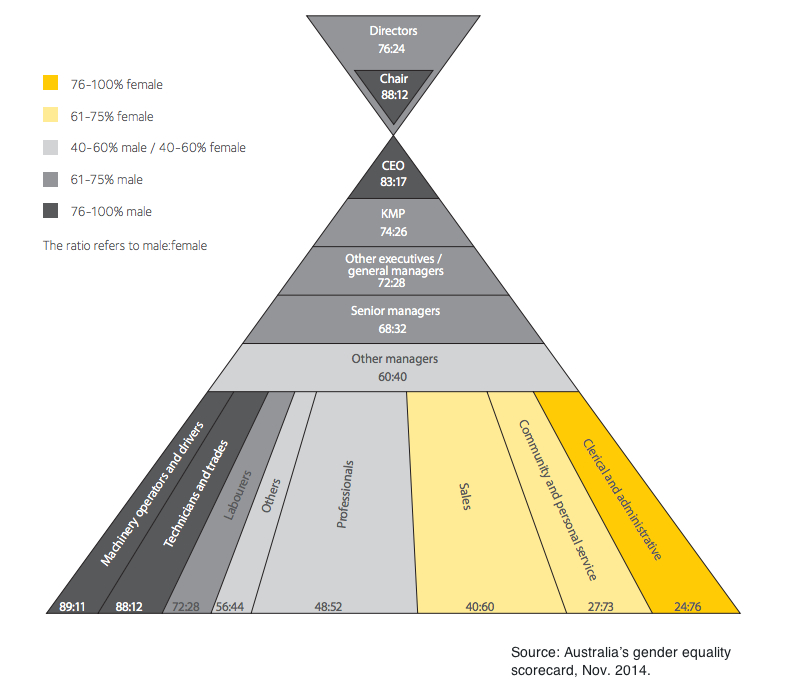According to a study released Tuesday by the Australasian Institute of Mining and Metallurgy (AusIMM), average salaries for mineral professionals are down 19 per cent on 2012 levels.
It also found minerals professionals working at the most senior levels are earning less in 2014 than they did in 2008 – even without adjusting for inflation.
However, working hours have increased by an average of four hours a week longer than a year ago at the same time as unemployment increased to 12 per cent.
AusIMM chief Michael Catchpole said the research shows the impacts the commodity price downturn is having on mining professionals. “Minerals professionals have experienced a roller-coaster with strong job opportunities and salaries growth during the minerals boom, and a sudden and significant downward adjustment in the last two years,” Catchpoole said. “Our research paints clear warning signals that minerals professionals are being burned by the boom to bust cycle of the minerals sector.”
The research also revealed there is still a massive gender pay gap in the industry with female mining professionals earning 27 per cent less than their male counterparts.
“To ensure that in the future those companies are not denying themselves some of the best talent within the country, by having such a glaring gap between what males and females are paid to do the same work,” Michael Catchpole said. “It’s particularly large in the senior career positions and we’re finding the pay gap has increased over a period of time.”
He is calling on the industry to address the problem. “Companies should conduct a pay equity audit right across their national ranks and take immediate steps to address this problem,” he said. He said if something was not done the problem would get worse.
The findings reinforce what the new Workplace Gender Equality Agency (WGEA) report released Monday shows: women are under-represented in senior mining industry roles.
Only 2.7% of mining CEOs are female professionals, who face an increasing gender pay gap with seniority.
Lynn Olssen, chair of the AusIMM Women in Mining Network said the survey results are very disappointing. “It is unacceptable that the gender pay gap remains so wide,” Olssen said. “The single most important action employers can take to address the gender pay gap is to conduct a pay equality audit.”
|
Professional Employment & Remuneration Survey 2014 How are minerals professionals faring in today’s labour market? In June 2014, more than 20 per cent (3334) of AusIMM members completed the annual Professional Employment and Remuneration Survey, the single largest response to any AusIMM survey. This allowed the Institute to generate solid data that gives strong insights into members’ current employment and salary experiences as well as their future expectations. The analysis from the survey is used as a key basis on which to engage with stakeholders and continue to advocate effectively for members to governments, businesses and other key stakeholders. Other Key findingsEmployment
Future outlook
|
Reports
Data Analysis
- AusIMM Remuneration Survey 2014 – full results
- AusIMM Professional Employment Survey 2014 – full results
Snapshot
Media releases
- Gender equity: essential to mining’s future, 25 November, 2014
- Minerals professionals working harder but earning less, 25 November, 2014
- Double-digit unemployment for minerals professionals, 9 September, 2014
Media coverage
The Professional Employment Survey findings released in September 2014 have received widespread coverage. Some of the articles and interviews are available via the following links:
- White collar miners feeling the squeeze (ABC Business, 24 Sep)
- Unemployment in mining sector double national rate: AusIMM (ABC online, 9 Sep)
- Unemployment for resource professionals hits double digits (Mining Australia , 9 Sep)
- Geologists out of work (The West Australian online, 9 Sep)
- Unemployment in mining sector ‘double national rate’ (ABC North West WA, 9 Sep)
- Interview with AusIMM CEO Michael Catchpole (ABC News Radio, 9 Sep)
- Minerals Council and Mining Institute at odds over review of 457 visa program (ABC Rural North West WA, 9 Sep)
- Australian Mining 2014: Salaries in focus (Australian Mining , 10 Sep)
See story online 1 | Story 2 | Story 3

